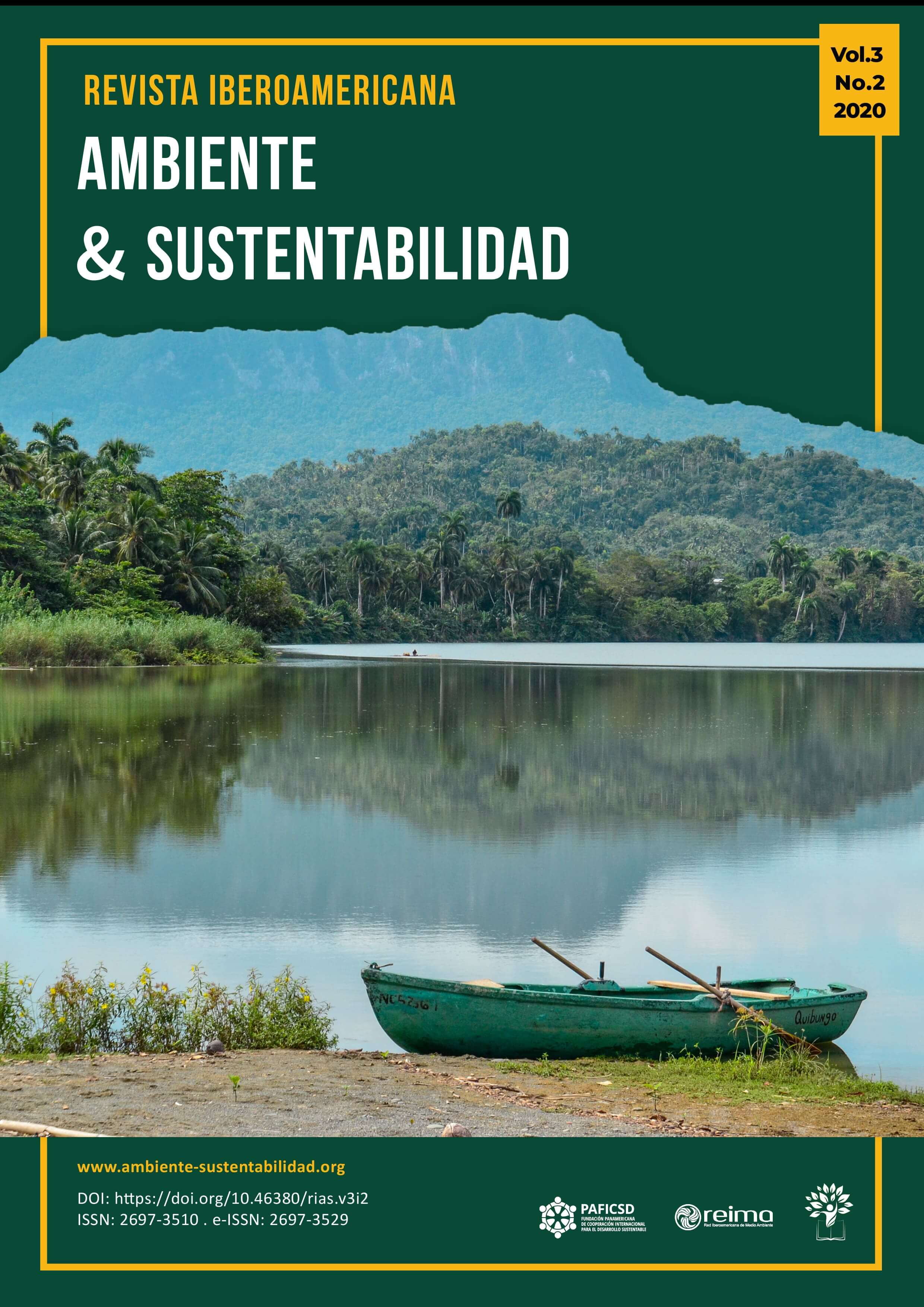Useful plants of the paramo and their potential for environmental sustainability: ethnobotanical characterization Sumapaz Colombia.
DOI:
https://doi.org/10.46380/rias.v3i2.92Keywords:
agroforestry systems, flora conservation, potential uses, traditional knowledgeAbstract
The unsustainable use of Colombia´ s´biodiversity is due to the lack of knowledge about it strategic potential. An ethnobotanical study in the high basin of Quebrada Honda river was developed, in order to characterize the uses of the flora species in the area by the community and to propose a more sustainable production alternatives through agroforestry systems. To collect the information, semi-structured interviews were conducted and ethnobotanical walks were made with local experts. Ninety eight useful species corresponding to 47 families and 86 genders were reported. The Asteraceae family presented the highest number of species with 14. Passiflora and Rubus were the highest population regarding genders. From all species studies, 51 had agricultural use, 29 medicinal use and 28 environmental services. The results obtained allowed to have an approach to the ethnobotanical knowledge in the buffer zone of the Sumapaz paramo and to recognize the rural knowledge associated to the local agroecosystem biodiversity. We empowered on the community knowledge increase regarding the strategic potential of local species trough the implementation of agroforestry systems that combine native species with a balance between conservation and production.
Downloads
Metrics
References
Andrade-C, M.G. (2011). Estado del conocimiento de la biodiversidad en Colombia y sus amenazas. Consideraciones para fortalecer la interacción ciencia-política. Revista de la Academia Colombiana de Ciencias Exactas, Físicas y Naturales, 35(137), 491-507. https://bit.ly/3p6i3Ev
Aranguren, A. (2005). Plantas útiles empleadas por los campesinos de la región de Bailadores, Venezuela. Boletín Antropológico, 23(64), 139-165. https://bit.ly/37JW14Q
Bello, J.C., Báez, M., Gómez, M.F., Orrego, O., y Nägele, L. (Eds.). (2014). Biodiversidad 2014. Reporte de estado y tendencias de la biodiversidad continental en Colombia. Instituto Alexander von Humboldt. https://bit.ly/2K4Rh0L
Bernal, R., Gradstein, S.R., y Celis, M. (Eds.). (2019). Catálogo de plantas y líquenes de Colombia. Instituto de Ciencias Naturales-Universidad Nacional de Colombia. https://bit.ly/3aGoBG7
Consejo Municipal de Sibaté. (2016). Plan de Desarrollo Municipal 2016-2019. Departamento de Cundinamarca, Colombia. https://bit.ly/38dxPqy
Estupiñán, A., y Jiménez, N. (2010). Uso de las plantas por grupos campesinos en la franja tropical del Parque Nacional Natural Paramillo (Córdoba, Colombia). Caldasia, 32(1), 21-38. https://bit.ly/3nOoBro
Food and Agriculture Organization. (2008). Bosques y energía: cuestiones claves. https://bit.ly/3gZTruE
Food and Agriculture Organization. (2018). Conjunto de herramientas para la Gestión Forestal Sostenible. https://bit.ly/2KfOb9Z
Food and Agriculture Organization. (2019). Transformar la alimentación y la agricultura para alcanzar los ODS. https://bit.ly/3r0Pvy6
Galvis, M., y Torres, M. (2017). Etnobotánica y usos de las plantas de la comunidad rural de Sogamoso, Boyacá, Colombia. Revista de Investigación Agraria y Ambiental, 8(2), 187-206. https://doi.org/10.22490/21456453.2045
Garavito, L.N. (2015). Los páramos en Colombia, un ecosistema en riesgo. Ingeniare, (19), 127-136. https://doi.org/10.18041/1909-2458/ingeniare.19.530
Guhl, E., Wills, E., Macías, L.F., Boada, A., y Capera, C. (1998). Guía para la gestión ambiental regional y local. FONADE-Departamento de Planeación Nacional-Quinaxi. https://bit.ly/34nvVmd
Iplant Collaborative. (2020, 30 de agosto). Taxonomic Name Resolution Service v4.1 [en línea]. https://bit.ly/3hfwZh3
Kapelle, M. (2004). Diccionario de la Biodiversidad. Instituto Nacional de Biodiversidad y Cooperación Española. INBio Press. https://bit.ly/2WpUA55
Ministerio de Ambiente y Desarrollo Sostenible. (2011). Política nacional para la gestión integral de la Biodiversidad y sus Servicios Ecosistémicos. Instituto Alexander von Humboldt. https://bit.ly/37MjgeE
Pérez, D. y Matiz-Guerra, L. (2017). Uso de las plantas por comunidades campesinas en la ruralidad de Bogotá D.C., Colombia. Caldasia, 39(1), 68-78. https://doi.org/10.15446/caldasia.v39n1.59932
Rangel, J.O. (2018). Las plantas con flores del páramo colombiano. En Colombia diversidad biótica XVI. Patrones de riqueza y de diversidad de las plantas con flores en el bioma de páramo. Universidad Nacional de Colombia. https://bit.ly/37swgFP
Rodríguez, M., Angueyra, A., Cleef, A., & Van Andel, T. (2018). Ethnobotany of the Sierra Nevada del Cocuy -Güican: climate change and conservation strategies in the Colombian Andes. Journal of Ethnobiology and Ethnomedicine, 14, 34. https://doi.org/10.1186/s13002-018-0227-6
Hernández, R., Mendoza, Ch.P., Méndez, S. y Cuevas, A. (2017). Fundamentos de investigación. McGraw-Hill.
Witte, S.L., Sanabria, O.L., Chacon, P., y García, R. (Eds.). (2011). Manual de Herramientas Etnobotánicas relativas a la Conservación y el Uso Sostenible de los Recursos Vegetales. Una contribución de la Red Latinoamericana de Botánica a la Implementación de la Estrategia Global para la Conservación de las Especies Vegetales hacia el logro de las Metas 13 y 15. OEA-FEMCIDI-RLB. https://bit.ly/3rDXjGt
Published
How to Cite
Issue
Section
License
Copyright (c) 2020 Uriel Rodríguez Espinosa, John Carlos Ruíz Caicedo, Denisse Viviana Cortés Castillo, Hugo Caballero Díaz

This work is licensed under a Creative Commons Attribution-NonCommercial-ShareAlike 4.0 International License.
This work is licensed under a Creative Commons Attribution-NonCommercial-ShareAlike 4.0 International License (CC BY-NC-SA 4.0)
© This license allows users to distribute, remix, adapt, and build upon the material in any medium or format, provided that attribution is granted to the creator.














